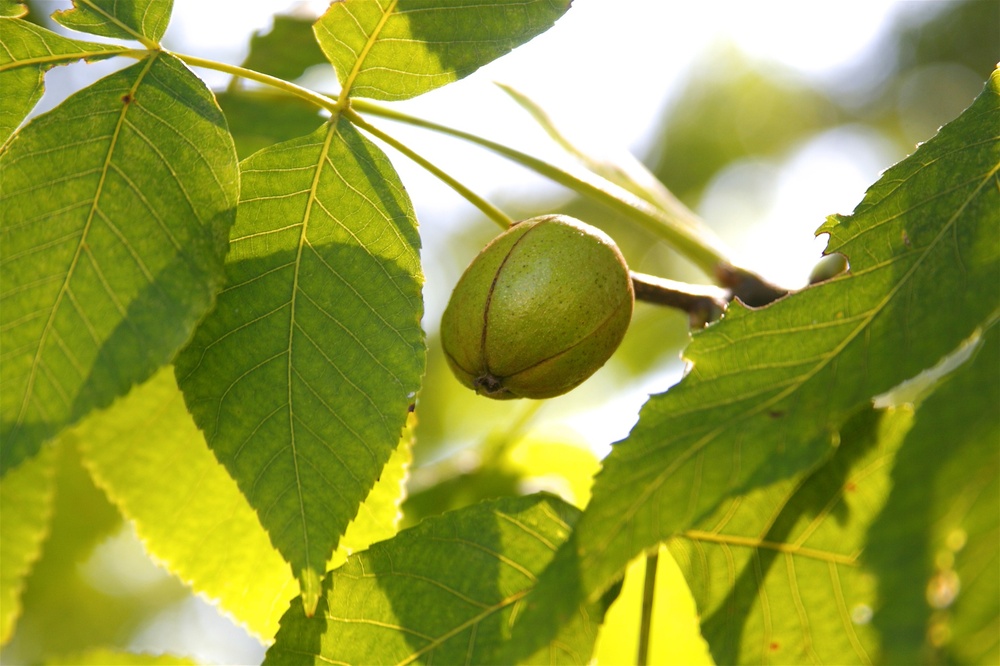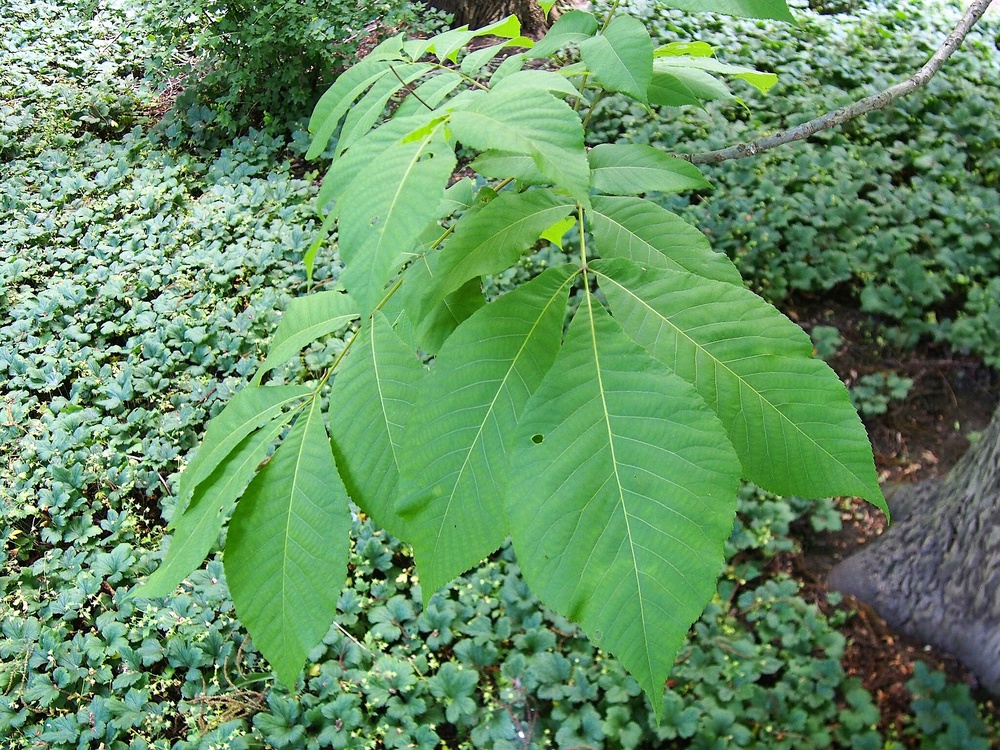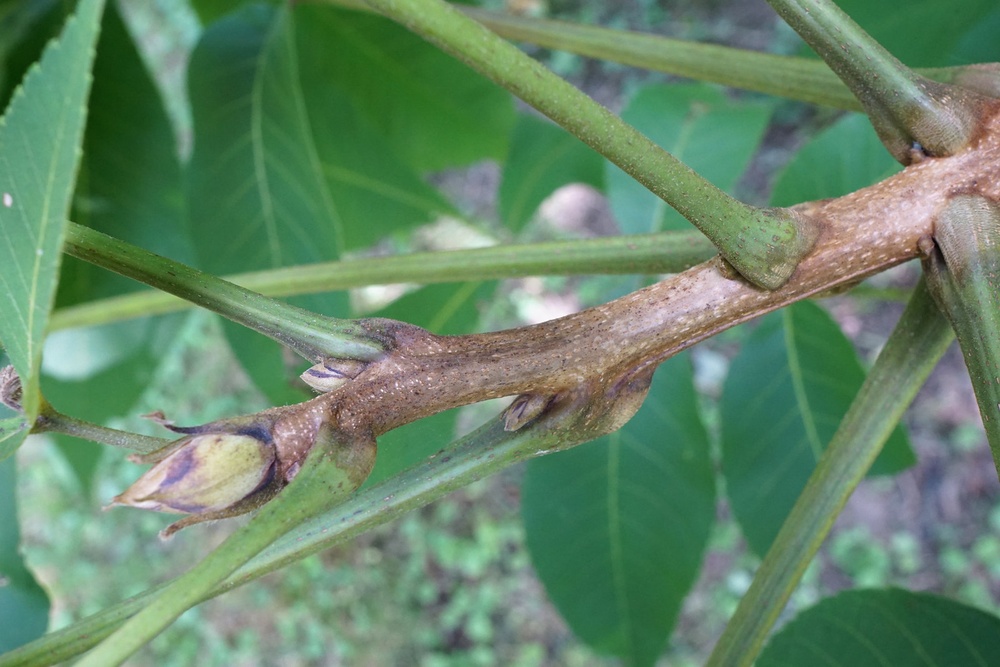Carya laciniosa
Koningsnoot / Shellbark hickory
Juglandaceae (Okkernootfamilie)
Edible plant part (2)
Nuts,
sap
Read 'form of consumption' for safe preparation methods
Toxic plant part (1)
None
Shellbark hickory belongs to the canopy layer in the food forest. In the process of ecological succession it is a late species. The growth rate is medium. Fully grown the plant has an average height of 15 to 35 meter. and a width of 10 to 25 meter.
The foliage (or leaf cover) is half-open. The Shellbark hickory is decidious. It buds in may.
This species forms a taproot deep root system. This species is non spreading in the food forest. Shellbark hickory is no nitrogen fixer.
 foto: Dan Mullen, https://www.flickr.com/photos/8583446@N05/3960217777
foto: Dan Mullen, https://www.flickr.com/photos/8583446@N05/3960217777
 foto: Dan Mullen, https://www.flickr.com/photos/8583446@N05/3960217777
foto: Dan Mullen, https://www.flickr.com/photos/8583446@N05/3960217777
 foto: Agnieszka Kwiecień, https://commons.wikimedia.org/wiki/File:Carya_laciniosa_Orzesznik_siedmiolistkowy_2019-06-01_04.jpg
foto: Agnieszka Kwiecień, https://commons.wikimedia.org/wiki/File:Carya_laciniosa_Orzesznik_siedmiolistkowy_2019-06-01_04.jpg
 foto: Plant Image Library, https://www.flickr.com/photos/138014579@N08/36657516545
foto: Plant Image Library, https://www.flickr.com/photos/138014579@N08/36657516545
Growth factors
- Frost (whole plant)
-
very strong frostcold frostmild frostlight frostno frost
- Frost (flowers)
-
very strong frostcold frostmild frostlight frostno frost
- Light
-
full sunlight shadehalf shadefairly deep shadedeep shade
- Wind
-
strong sea windstrong windsome windshelteredvery sheltered
- Soil texture
-
sandloamlight clayheavy claypeat
- Soil moisture
-
inundationwetmoistdrydrought
- Groundwater level
-
very lowlowmediumhighvery high
- Soil acidity
-
very acidacidneutralalkalinevery alkaline
- Soil fertility
-
very richrichaveragepoorvery poor
Flowering and pollination
- Flowering period (peak)
- early may, mid may, end of may, end of june
- Flowering period (length)
- several weeks
- Pollination vector
- wind
- Plant reproductive fertility
- partially self-fertile, self sterile, varies per cultivar
- Maximum distance for cross pollination
- 50 - 100 metre
Life Span and Plant Health
Disease susceptibility
very resistantMain serious pests and diseases
yet unknownHarvest and Consumption
Nuts
Sap
- Harvest location edible part
- Ground layer
- Harvesting period - start
- Early october, mid october, end of october
- Harvesting period - length
- Several weeks
- Harvesting period - uniformity
- Medium
- Suitable harvesting methods
- Hand, simple tool
- Form of consumption
- Fresh, processed
- Natural storability
- Year
- Suitable markets
- Niche
- Productive life span - start (year) - minimum
- 20
- Productive life span - start (year) - minimum
- 12
- Productive life span - start (year) - maximum
- 40
- Productive life span - peak (year) - minimum
- 30
- Form of consumption
- Fresh
- Natural storability
- Year
- Productive life span - start (year) - minimum
- 5
- Productive life span - start (year) - maximum
- 7









































